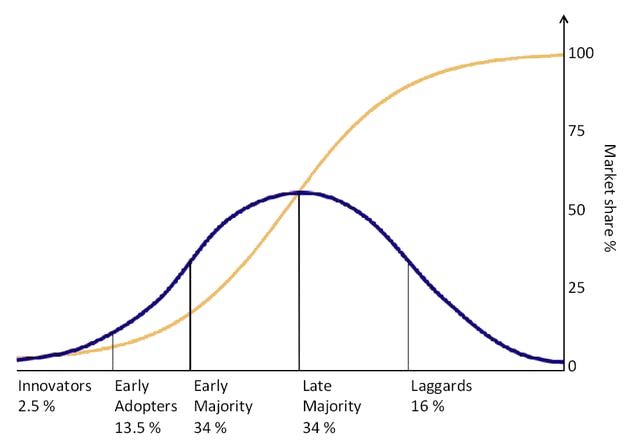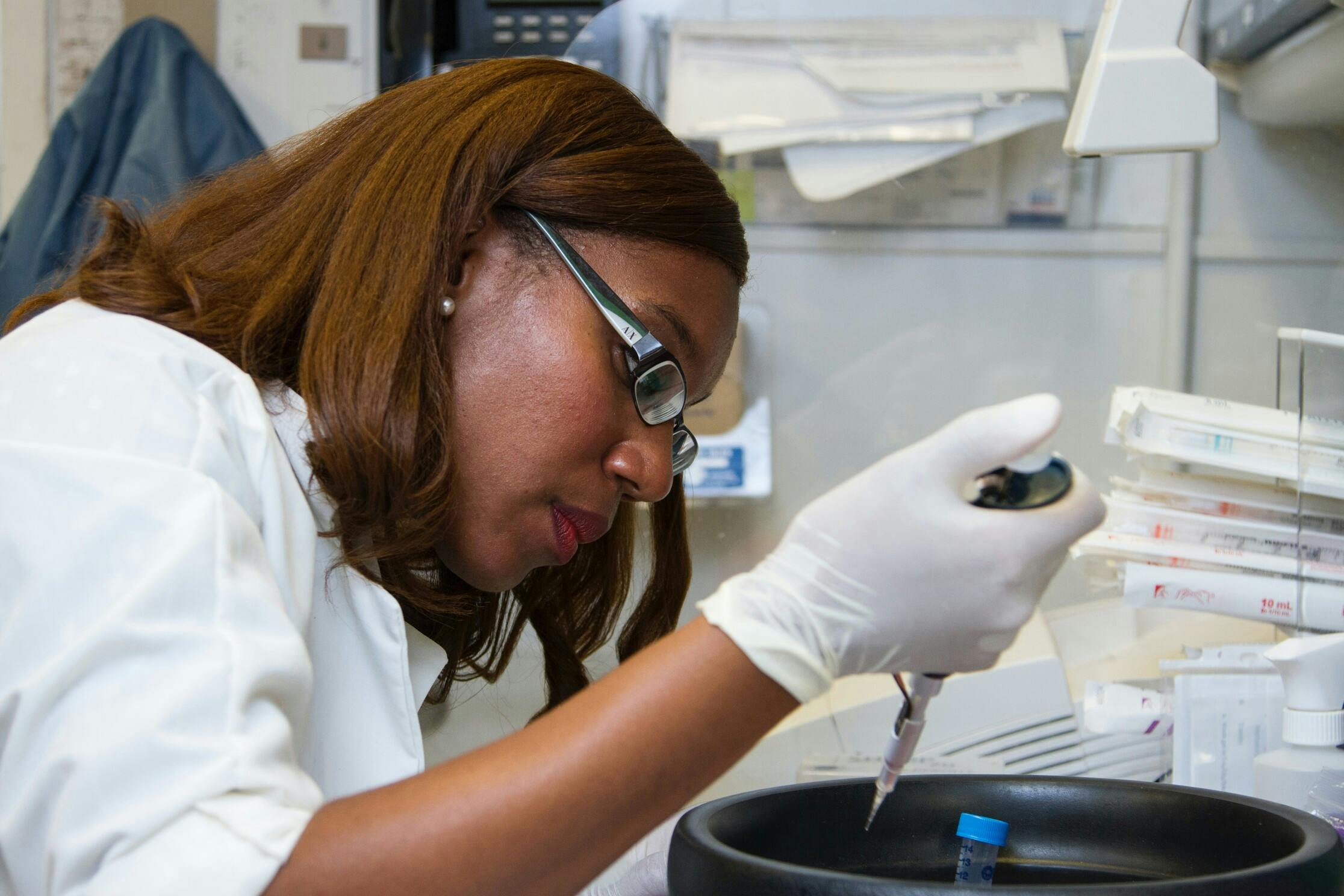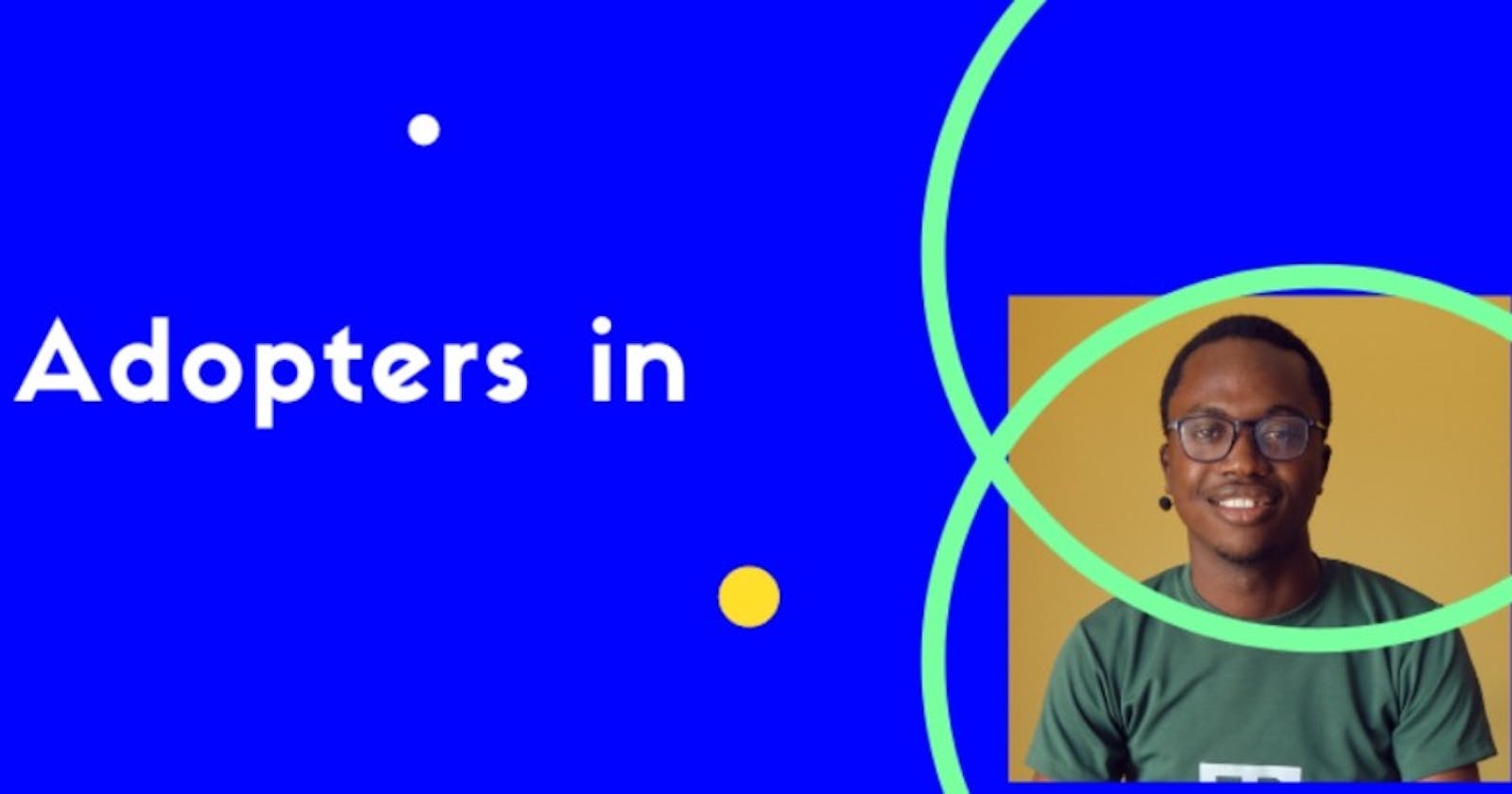Yay! The eureka moment is here! Weeks of shipping velocity, and finally, the MVP is ready for use. As an agile team, you most likely keep your intended users in the loop as your team develops the product to gather feedback and know what to prioritize.
 Once you ship the first version of the product, most first-time product teams think the user would come. The general fallacy - if we build, they will come. Product (digital products) adoption follows a defined cycle according to Roger’s research. Interestingly, not everyone will immediately adopt a disruptive idea despite obvious benefits. The research identified some fascinating personality traits that help us organize how people will accept an innovation. It turns out we approach innovations in the following ways.
Once you ship the first version of the product, most first-time product teams think the user would come. The general fallacy - if we build, they will come. Product (digital products) adoption follows a defined cycle according to Roger’s research. Interestingly, not everyone will immediately adopt a disruptive idea despite obvious benefits. The research identified some fascinating personality traits that help us organize how people will accept an innovation. It turns out we approach innovations in the following ways.
Innovators – Innovators are the first individuals to adopt an innovation. Innovators are willing to take risks, are the youngest in age, have the highest social class, have great financial lucidity, very social, and have the closest contact to scientific sources and interaction with other innovators. Risk tolerance has them adopting technologies that may ultimately fail. Financial resources help absorb these failures. (Rogers 1962 5th ed, p. 282)
Early Adopters – This is the second-fastest category of individuals who adopt an innovation. These individuals have the highest degree of opinion leadership among the other adopter categories. Early adopters are typically younger in age, have a higher social status, have more financial lucidity, advanced education, and are more socially forward than late adopters. More discrete in adoption choices than innovators. Realizing judicious choice of adoption will help them maintain a central communication position (Rogers 1962 5th ed, p. 283).
Early Majority – Individuals in this category adopt an innovation after a varying degree of time. This time of adoption is significantly longer than the innovators and early adopters. Early Majority tend to be slower in the adoption process, have above average social status, contact with early adopters, and seldom hold positions of opinion leadership in a system (Rogers 1962 5th ed, p. 283)
Late Majority – Individuals in this category will adopt an innovation after the average member of society. These individuals approach an innovation with a high degree of skepticism and after the majority of society has adopted the innovation. Late Majority are typically skeptical about an innovation, have below-average social status, very little financial lucidity, in contact with others in late majority and early majority, very little opinion leadership.
Laggards – Individuals in this category are the last to adopt an innovation. Unlike some of the previous categories, individuals in this category show little to no opinion leadership. These individuals typically have an aversion to change-agents and tend to be advanced in age. Laggards typically tend to be focused on “traditions”, likely to have the lowest social status, lowest financial fluidity, be the oldest of all other adopters, in contact with only family and close friends, very little to no opinion leadership.
 Capturing the early adopters can be instrumental to your product's success. They are going to help in spreading your product innovation, obtain measurable metrics, and a path to profitability. However, it is not easy as it sounds, especially in emerging markets with little or no disposable income to try out innovations. In some emerging markets, your product competitor is not your competitor, the real competitor is food.
Capturing the early adopters can be instrumental to your product's success. They are going to help in spreading your product innovation, obtain measurable metrics, and a path to profitability. However, it is not easy as it sounds, especially in emerging markets with little or no disposable income to try out innovations. In some emerging markets, your product competitor is not your competitor, the real competitor is food.
In the emerging markets, who are the early adopters?
Identifying the early adopters for your product is entirely the decision of your product team. I am not here to tell you the early adopters, but I want you to understand that in the emerging market, there are no easy early adopters.
I will be adding a step to Roger’s research for emerging markets, the force adopter. The users don’t know what they want, or do they? Most early adopters don’t know what they want even though the benefits are obvious. They are most likely going to be your product evangelists after testing it out and harnessing the value your product team has created.
How do we get them to use the product? How do we convert force adopters to early adopters in emerging markets?
Incentivize the process An incentive for products would want people to try out your solution or offering. Incentives don’t necessarily mean monetary value or gift. It can be process improvement around social class. Early adopters want high social status - tricks such as likes, followers, views, rating, leaderboard, etc., can help achieve the high social status for the forced adopters and finally bridge the gap to early adopters. Your product must create obvious value for this class of adopters.
Simplify the process Imagine a scientist enjoying his work more now that he won’t need to wait anymore for a spreadsheet macro to run for an hour before spitting out the research results he needs to start his day. Heck, he will now achieve his daily goals with time to spare. Everything he needs to make a good decision is right at his fingertips. In return, he can pay closer attention to the critical aspect of his job because he knows he now has the right and timely tools to solve his problems.

The analogy is similar to bringing out new products for this class of adopters. Make sure the process of onboarding to value maximization for your product is simple, fun, and seamless as the brain communicates with the hand.
Feedback mechanism Ensure you don’t keep them in the dark. Implement a feedback process to continuously engage them on what they do not like about the product, what they want to improve, etc. Your product team must pay attention to granular data to observe the early interaction with your product and how the improvements can be added to future releases.
Continuous velocity shipping This class of adopters has the highest degree of opinion leadership, constant shipping velocity of relevant improvements keeps them addicted to the product. They want to extract more value until you create a habit for them with your product. Using the feedback mechanism to implement updates also massage their ego that their opinion matters. Well, in reality, their opinion matters because they are interacting with your product to give you useful feedback.
Great user support experience Everything is part of the user experience… the onboarding, usability, support. The involvement of your product team in every step of the process is not overstepping your boundary, it is mission-critical. Make sure you establish a solid support structure to help this class of adopters get comfortable with your product. The process of building trust is a long haul. In the end, it is highly rewarding.
My opinions on bridging the gap between the forced adopters and early adopters in emerging markets.
Want to contribute to the conversation, disagree with some of the points, the comment section is always open. Our differences create meaningful innovations that continue to shape our world.

